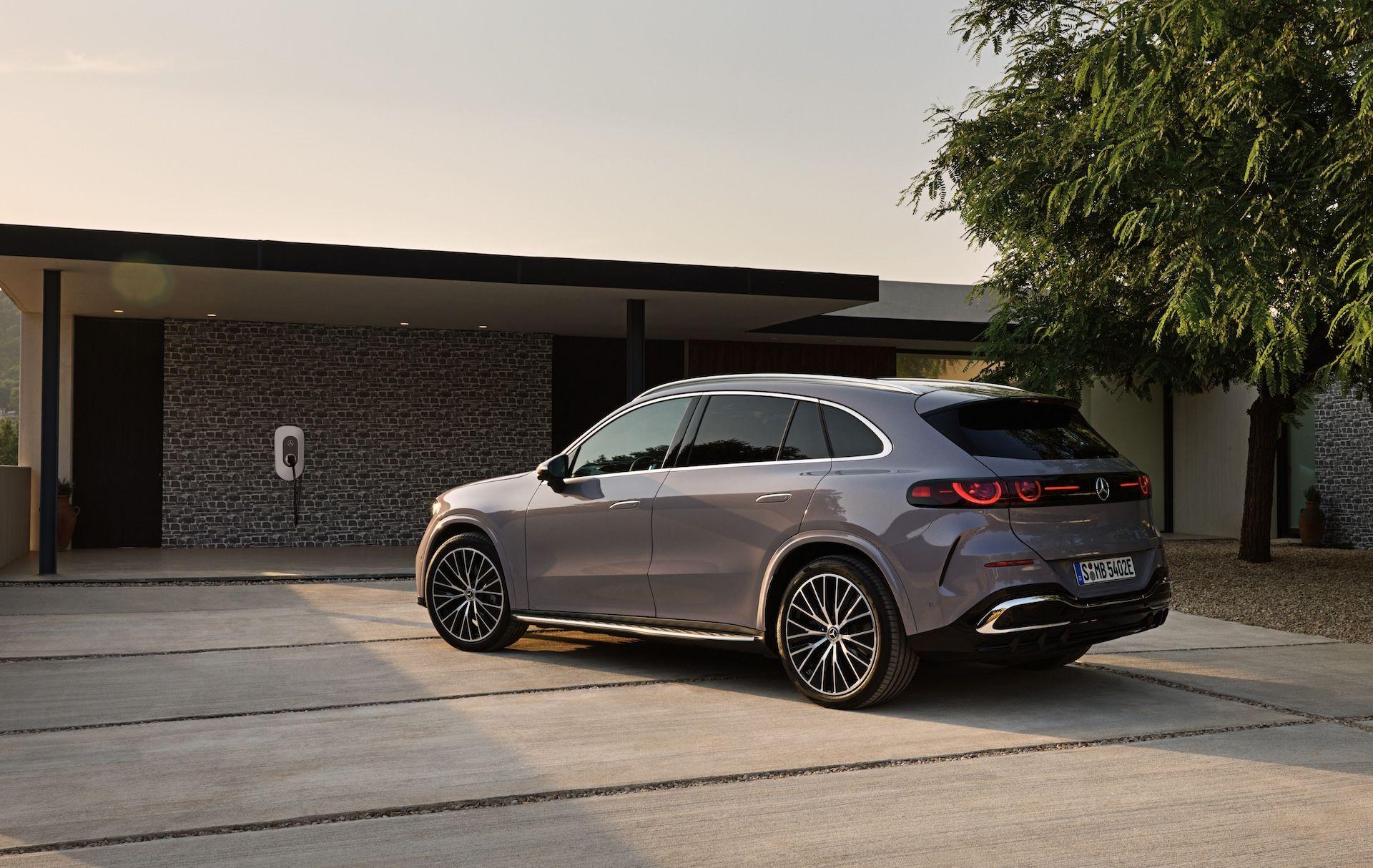- Introduction starting in 2026, led by the new all-electric GLC
- MB.CHARGE Home connects vehicle, wallbox, green energy tariff and energy market access
-
Contributing to the energy transition: The bidirectionally chargeable
vehicle is integrated into the energy system as a storage device
Mercedes-Benz is announcing the introduction of a fully integrated service offering for bidirectional charging at IAA Mobility 2025. Starting in 2026, the brand's new generation of electric vehicles will not only be able to take in electricity but also feed it into a home network or the public grid in a targeted manner. The new all-electric GLC will be the first to feature this technology. Further models – including the new CLA series – will gradually follow. The market launch will begin in Germany, France and the United Kingdom. Other markets will be entered step by step.
Premium ecosystem from a single source
The Mercedes-Benz MB.CHARGE charging ecosystem combines what the market has often offered separately into a consistent end-to-end experience. At its heart is seamless vehicle integration for simple, connected control and full transparency. To start with, a bidirectional wallbox will be provided via The Mobility House. The connection to the energy market will also be provided by The Mobility House through a special green energy tariff including feed-in tariffs. Advice, installation and onboarding come from a single source for a smooth transition to a new charging experience at home.
MB.CHARGE Home: Intelligent charging with a system
With MB.CHARGE Home, Mercedes-Benz is launching a digital charging ecosystem that actively involves customers in the energy market. The aim is to reduce energy costs for private households while contributing to grid stability.
- MB.CHARGE Home Intelligent enables automated, grid-friendly and cost-optimized charging of electric vehicles. The system takes into account scheduled departure times and the desired state of charge, and initiates charging during periods with particularly favorable electricity tariffs – typically overnight, when demand is low or when a high share of renewable energy is available and prices are correspondingly low. This flexibility is additionally compensated via the Mercedes-Benz energy tariff.
- MB.CHARGE Home Pro Intelligent expands this offering with bidirectional functionality: During periods of high electricity prices and low availability of renewable energy, energy from the vehicle battery can be fed back into the grid and remunerated. This turns the vehicle into an active energy source, helps reduce household energy costs, and supports the stability of the power grid.
Control is via a smartphone app. The system orchestrates all processes in the
background, relieving users of the technical complexity. In addition, the
vehicle is intended to be used as a home energy source in an existing back-up
power system in conjunction with a compatible bidirectional wallbox.
"With MB.CHARGE Home, our customers receive a coordinated complete package: Mercedes-Benz provides the digital charging ecosystem connected to the vehicle while The Mobility House provides the appropriate green energy tariff and connection to the energy market. This means that all charging processes at home are carried out using 100% electricity from renewable energies. "
Franz Reiner, CEO,
Mercedes-Benz Mobility
The electric car as an active component of the energy transition
With the introduction of bidirectional charging, Mercedes-Benz is breaking new ground in the premium passenger car segment and at the same time contributing to the energy transition. Electric vehicles are becoming decentralised energy storage devices. They help to balance out fluctuations in the power grid. When there is high generation of electricity from renewable sources, the vehicles charge automatically; when demand is high, they feed energy back into the grid. This creates additional storage capacity, which better balances supply and demand and optimises the use of wind and solar power – instead of curtailing it when the grid is overloaded.
Bidirectional charging also gives customers the opportunity to actively reduce their energy costs. By charging intelligently at times when electricity prices are low and feeding surplus energy back into the grid when market prices are high, they benefit from optimised energy management.
Mercedes-Benz and its electric vehicles are ready for bidirectional charging. However, in order for customers to be able to utilise the full potential of vehicle-to-grid, regulatory frameworks are still required in some countries – especially for grid feed-in. Mercedes-Benz is working with partners from the energy industry to ensure that these conditions are created.
